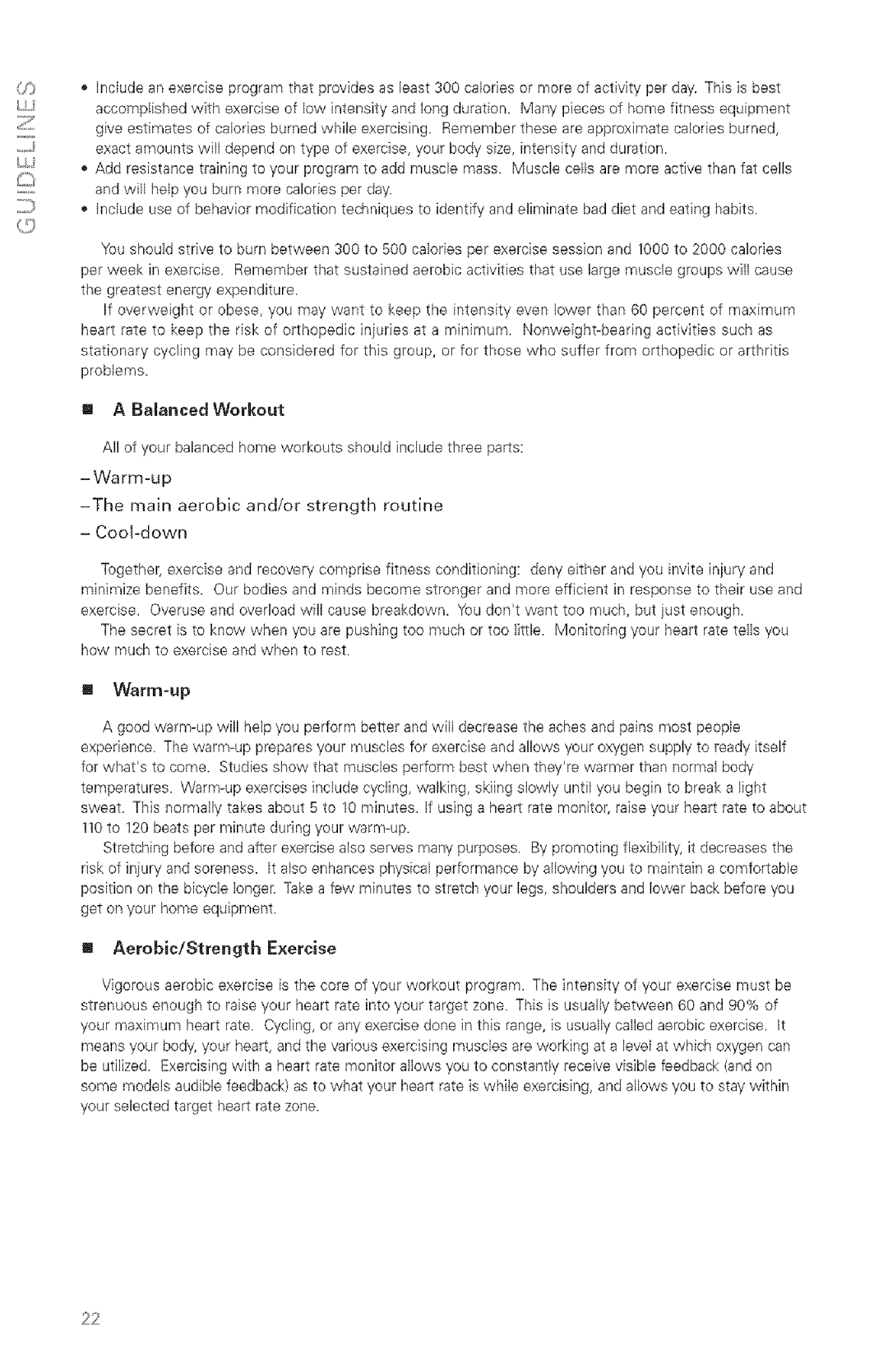
Include an exercise program that provides as least 300 calories or more of activity per day. This is best accomplished with exercise of low intensity and long duration. Many pieces of home fitness equipment give estimates of calories burned while exercising. Remember these are approximate calories burned, exact amounts will depend on type of exercise, your body size, intensity and duration.
•Add resistance training to your program to add muscle mass. Muscle cells are more active than fat cells and will help you burn more calories per day.
Include use of behavior modification techniques to identify and eliminate bad diet and eating habits.
You should strive to burn between 300 to 500 calories per exercise session and 1000 to 2000 calories per week in exercise. Remember that sustained aerobic activities that use large muscle groups will cause the greatest energy expenditure.
If overweight or obese, you may want to keep the intensity even lower than 60 percent of maximum heart rate to keep the risk of orthopedic injuries at a minimum.
!A BaJanced Workout
All of your balancedhome workouts shouldincludethree parts:
Together, exercise and recovery compdse fitness conditioning: deny ekher and you invite injury and minimize benefits. Our bodies and minds become stronger and more efficient in response to their use and exercise. Overuse and overload will cause breakdown. You don't want too much, but just enough.
The secret is to know when you are pushing too much or too little. Monitoring your heart rate tells you hew much to exercise and when to rest.
!Warm=up
A good
Stretching before and after exercise also serves many purposes. By promoting flexibility, it decreases the risk of injury and soreness. It also enhances physical performance by allowing you to maintain a comfortable position on the bicycle longer. Take a few minutes to stretch your legs, shoulders and lower back before you get on your home equipment.
! Aerobic/Strength Exercise
Vigorous aerobic exercise is the core of your workout program. The intensity of your exercise must be strenuous enough to raise your heart rate into your target zone. This is usually between 60 and 90% of your maximum heart rate. Cycling, or any exercise done in this range, is usually called aerobic exercise. It means your body, your heart, and the various exercising muscles are working at a level at which oxygen can be utilized. Exercising with a heart rate monitor allows you to constantly receive visible feedback (and on some models audible feedback) as to what your heart rate is while exercising, and allows you to stay within your selected target heart rate zone.
22
